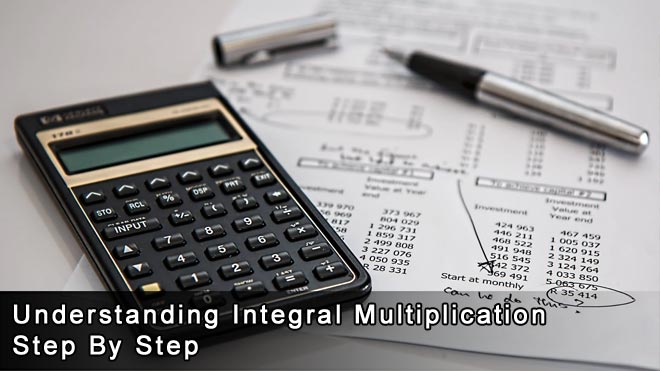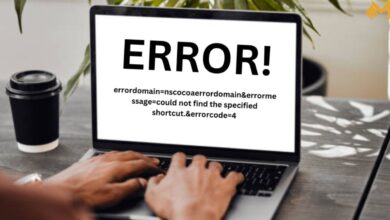
Integrals are also defined as locating the region under a curve. This definition is too narrow. It’s like claiming multiplication happens to locate the field of rectangles. The calculating area is a worthwhile application, but not the aim of multiplication.
You’ll hear a lot of discussion about the area. The area is only one way to imagine multiplication. The trick is not the field, but the concept of mixing quantities to produce a new result. We can integrate (“multiply”) length and width to get a plain old field, sure. But we can integrate speed and time to get the size, or weight, width, and height to get volume.
When we try to use standard multiplication, but can’t, we pull out the big guns and combine them. The area is just a simulation technique, so don’t get too wrapped up in it.
Understanding multiplication in the context of integrals
Over time, our interpretation of multiplication evolved:
Multiplication is the repeated addition of integers (2 x 5). Multiplication is scaling for real numbers (4.9 x √4). Multiplication is tossing and scaling in case of negative numbers (- 6.2 × 9.8). Multiplication is also scaling and rotating complex numbers (5 × 2i).
We’re moving toward a broader concept of “applying” one number to another, with the properties we use will be varying. Integration is the next step in this journey.
Read Also: The Numbers Game: Why Cloud Accounting Is The Future
How does the area come into play?
The area is a complicated topic. For the time being, consider the area to be a visual representation of multiplication on a graph. We can add an axis and get a result for each count on a different axis which will be 12 square units. Each input’s properties were passed to the output in square units.
Isn’t it simple? This is where things get a little complicated. Multiplication will give the area in negative which does not exist (2 x (-6) = -12).
We recognize the graph as a representation of multiplication and employ the comparison as required. We could multiply, even though someone was blind and there were no diagrams. The area is merely a supposition.
Part by Part Multiplication
Now multiply 2 with 6.5.
Since 6.5 is not a count, we may use a part by part operation. If 2×6 equals 2 + 2 + 2 + 2 + 2 + 2, so 2 x 6.5 equals 2 + 2 + 2 + 2 + 2 + 2 + 2×0.5 equals 2 + 2 + 2 + 2 + 2 + 2 + 1 = 13
We’re multiplying 2 with 6.5. In other words, we mixed two segments with 6 entire segments (2 x 6= 12) and one partial segment (2 x 0.5 = 1).
We’re so used to multiplication that we’ve forgotten how effective it is. We may divide a number into units (whole and partial), multiply each part, and then total the results. Have you seen how we handled a fractional part? This is the first step toward integrals.
Numbers don’t necessarily sit still long enough for us to add them up. Situations like “You drove 180 km/h for 50 minutes” are for convenience, not realism.
How to describe a varying number?
Our first test is defining a number that is changing. We can’t simply say, “I have covered 20 km.” It’s not that specific. How much you took to cover that distance?
Now let’s get precise. You have traveled 1 km in the first 2 minutes, 1 km in the 3rd minute, 1 km in the 4th minute, and 1.3 km in the 5th minute, and so on.
Now, this is a decent summary, precise enough to know your covered distance. The formal definition is “speed is a function of time”, which means we can substitute the value of time and speed to get the distance or the value of distance and time to get the speed.
Distance =∫Speed(t)× Time
Where speed denotes the speed at any given time. Since speed(t) = 2t in our case, we can write:
Distance =∫ 2t × t
Yet this equation still seems strange. “t” always seems to be a single moment we must choose (for example, t=3 seconds), implying that speed(t) would take on a single value. That is not appropriate.
We can take one pace and assume that holds true for the whole rectangle by using regular multiplication. However, shifting speeds necessitate a piecemeal approach to combining pace and time for each second.
When the numbers do not change, normal multiplication is a special case of integration. An online antiderivative calculator (integral) could be very handy at this stage.
What to consider when multiplying part by part?
A question arises when multiplying part by part. How big is a “part”? Is that part a distance in meters or kilometers, speed in meter per second, or time in seconds, minutes, or hours?
The part is small enough that the meaning seems to be the same over the period. We don’t require absolute accuracy.
Limits were invented to assist us with part by part multiplication. Although they are helpful, they are a solution to a dilemma that can divert attention away from the perception of joining things. It irritates me that limitations are imposed at the very beginning of calculus before we grasp the issue they were designed to. They’re a useful concept, to be sure, but Newton seemed to grasp calculus just fine without them.
Let’s assume we’re dealing with an interval from 4 to 5 seconds.
The initial velocity (4 x 3 = 12mph) differs from the final velocity (5 x 4 = 20mph). Now that we have two velocities, how will we get the distance, and what value of velocity will be used?
The solution is that we divide velocity into small enough fragments (4.000to 4.001 seconds) until the gap in pace between the start and end of the cycle doesn’t matter to us. Again, this is a longer conversation, but there’s a time span that makes the difference negligible.
On a graph, visualize each interval as a single point on the diagram. You can draw a straight line up to each speed, and your “area” is a collection of lines that multiply.
Wrapping it up
It was difficult to separate a “part” from its value. The period under consideration is referred to as a “part” (1 nanosecond, 1 millisecond, or 1 second). The position is the start of the nanosecond, millisecond, or, second interval. The value represents the speed at that point.
Once again, calculus allows one to shrink the interval until we can’t say the difference in pace between the beginning and end of the interval. Keep an eye on the larger picture because by using this method, we multiply integrals part by part. Which makes the whole process a lot simple.







